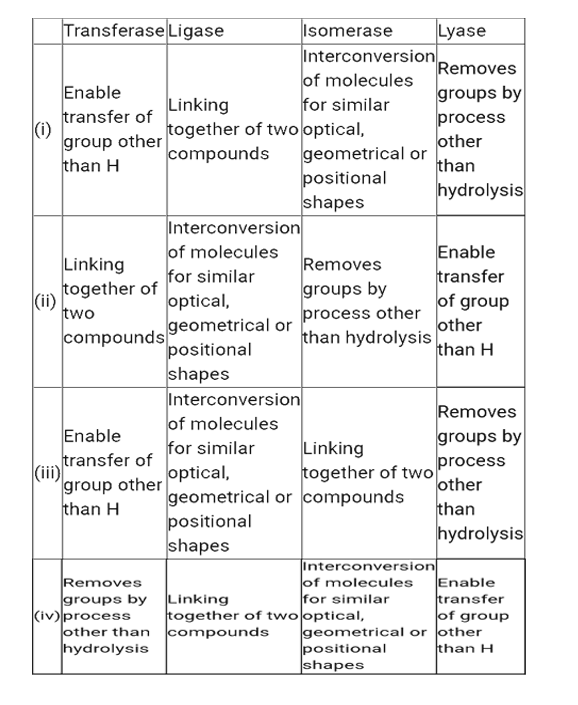Which of the following options correctly represents the lung conditions in asthma and emphysema, respectively
Increased respiratory surface, Inflammation of bronchioles
Increased number of bronchioles, Increased respiratory surface
Inflammation of bronchioles, Decreased respiratory surface
Decreased respiratory surface, Inflammation of bronchioles
The correct Answer is:C
To solve the question regarding the lung conditions in asthma and emphysema, we need to understand the characteristics of each condition and how they affect the respiratory system.
1. Understanding Asthma:
- Asthma is primarily characterized by inflammation of the airways, specifically the bronchi and bronchioles.
- This inflammation can lead to narrowing of these air passages, making it difficult for air to flow in and out of the lungs.
- The alveoli, which are the air sacs where gas exchange occurs, are not directly affected in asthma.
2. Understanding Emphysema:
- Emphysema is a chronic lung condition that primarily affects the alveoli.
- In this condition, the walls of the alveoli are damaged, leading to a reduction in the surface area available for gas exchange.
- This damage is often caused by long-term exposure to irritants, particularly cigarette smoke, and results in a decreased efficiency of oxygen and carbon dioxide exchange.
3. Comparing the Two Conditions:
- In asthma, the problem lies in the inflammation of the bronchi and bronchioles, while the alveoli remain intact.
- In emphysema, the alveoli are damaged, leading to a significant reduction in the surface area for gas exchange.
4. Selecting the Correct Option:
- Based on the characteristics outlined, we can conclude that the correct representation of lung conditions in asthma and emphysema is:
- Asthma: Inflammation of bronchi and bronchioles
- Emphysema: Damage to alveoli leading to decreased respiratory surface area
- Therefore, the correct answer is option C, which accurately describes these conditions.
- Asthma is primarily characterized by inflammation of the airways, specifically the bronchi and bronchioles.
- This inflammation can lead to narrowing of these air passages, making it difficult for air to flow in and out of the lungs.
- The alveoli, which are the air sacs where gas exchange occurs, are not directly affected in asthma.
- Emphysema is a chronic lung condition that primarily affects the alveoli.
- In this condition, the walls of the alveoli are damaged, leading to a reduction in the surface area available for gas exchange.
- This damage is often caused by long-term exposure to irritants, particularly cigarette smoke, and results in a decreased efficiency of oxygen and carbon dioxide exchange.
- In asthma, the problem lies in the inflammation of the bronchi and bronchioles, while the alveoli remain intact.
- In emphysema, the alveoli are damaged, leading to a significant reduction in the surface area for gas exchange.
- Based on the characteristics outlined, we can conclude that the correct representation of lung conditions in asthma and emphysema is:
- Asthma: Inflammation of bronchi and bronchioles
- Emphysema: Damage to alveoli leading to decreased respiratory surface area
- Therefore, the correct answer is option C, which accurately describes these conditions.
Similar Questions
Knowledge Check
- Question 1 - Select One or More
Which of the following reactions are correctly represented?
AR−CH=CH2+HCl→R−CH∣Cl−CH3BR−CH=CH2+HIH2O2−−→hvR−CH2−CH2−ICR−CH=CH2+HBrH2O2−−→hvR−CH2−CH2−BrDR−CH=CH2+HIH2O2−−→hvR−I∣CH−CH3
Which of the following correctly represent the electronic distribution in the Mg atom?
View SolutionWhich of the following options represents the correct bond order ?
View SolutionWhich one of the following structures is correctly represented.
View SolutionWhich of the following correctly represent the acidic strenth of given acids?
View SolutionWhich of the following graphs correctly represents the variation of g on the - Earth?
View SolutionWhich of the following option represent extinct species?
View SolutionWhich of these options correctly represents the functions of all these enzymes ?
 View Solution
View Solution

